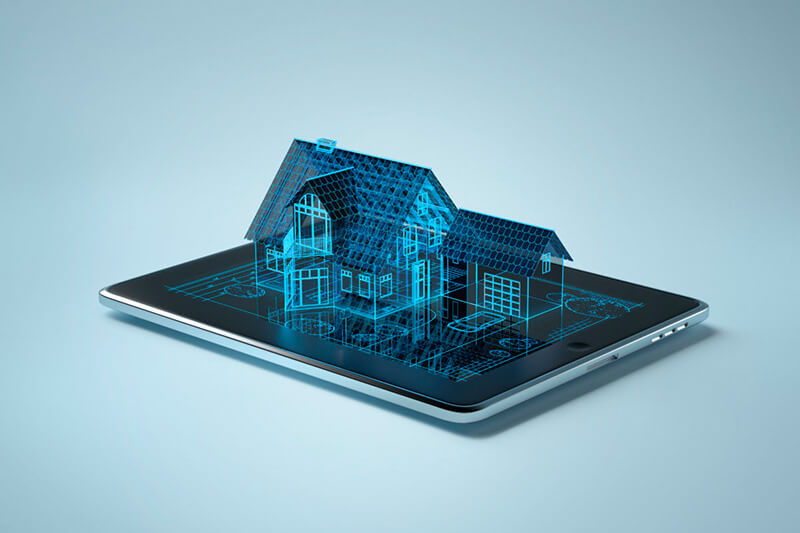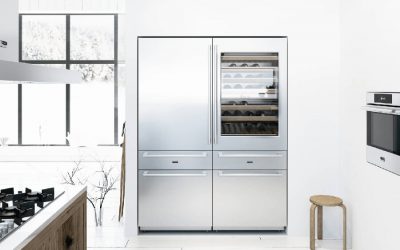- Are your energy bills testing the limits of your pockets?
- Are you tired of family members leaving the lights on when no one’s in the room?
- Do you find yourself unplugging unnecessary devices?
You’re not alone!
In today’s modern world, many electrical appliances draw on our electrical power and unnecessarily up our energy bills. But there’s one new technology that is opening up a wide range of exciting possibilities: The smart home. The many innovations with smart homes gives you ultimate control over your energy usage – right at your fingertips.
Read on and see our 7 tips on how you can save energy with your smart home now.
1. Smart Sprinklers
Okay, you got us! This isn’t technically saving electricity, but it can still save you resources and money, so we figured we’d throw it in!
Firstly, what is a smart sprinkler?
Smart sprinkler systems are an automatic irrigation system that utilizes a variety of cutting-edge techniques to optimize water usage in residential and commercial irrigation systems.
In essence, a smart sprinkler system uses a series of algorithms to read the local conditions, such as current moisture levels, forecasted weather conditions, current temperature, and so on to figure out the best time to water your plants.
This enables you to conserve water while keeping your plants optimally hydrated.
The best part is it can be connected to your phone and home, so you can water the plants without getting wet, or even having to get out of your PJ’s!
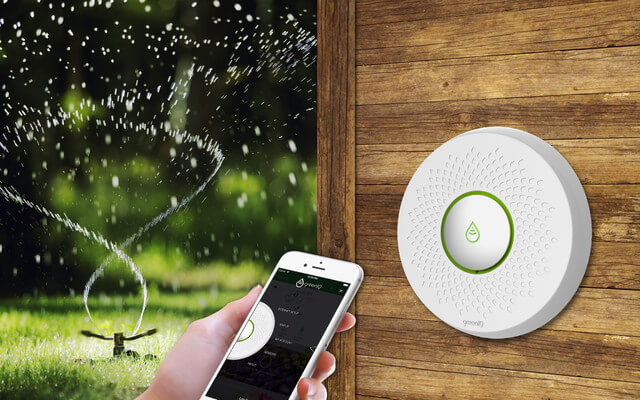
As a result, your overall water usage levels are reduced and your garden’s satisfaction is increased! It’s a win-win!
2. Smart Thermostats
Australia’s range of temperature is vast. In some places, the temperature can vary even over the course of several hours. As such, heating and cooling can begin to drain one’s bank account.
With the introduction of smart houses, came the development of Smart Thermostats (also known as ST’s). ST’s read or sense the weather forecast, analyze your usage patterns, and adjust accordingly. They can even integrate with the aforementioned smart sprinklers!
This increases a thermostat’s responsiveness to changes in temperature and allows it to make subtle changes far in advance instead of drastic changes that consume more energy.
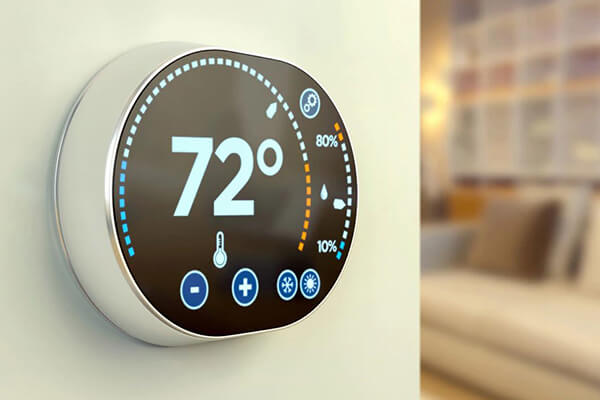
Nest Labs released a recent study on ST’s and their data shows that the average household can save anywhere from 10-12% on heating costs and up to 15% on cooling costs just by switching to a smart thermostat. As heating and cooling make up a large portion of your household expenditure regardless of which country you live in, this can translate to significant savings over the course of a year wherever you are!
Additionally, with the ability to connect to one’s smartphone remotely, you can turn your heating/cooling devices off during the day, but have them turn on 5-10 minutes before you walk in the door – talk about convenience!
3. Smart Home Security Systems
Home Security Systems (HSS) provide a plethora of advantages, one of which is the potential to save electricity. You can use your home security system to identify and manage locations where energy is being used and occasionally wasted. You can then turn off appliances and lights right from your smart device, or set up the system to turn off devices when no human presence is detected!
Home security systems can use things like motion sensors and timers for lights, allowing you to regulate when and how energy is used, maximising your dollar.

The ability to regulate lighting and other electronics with automation can decrease overall energy consumption, allowing you to enjoy the comforts of your home without stressing about accidentally leaving things on.
Some security systems, before the advent of smart systems, may inadvertently call 000 in an event of a “perceived” emergency. This causes an unnecessary nuisance to Australia’s valued emergency workers and can be very embarrassing. Persistently calling 000 can also result in fines – understandably.
However, when connected to a smart system, you have the ability to view a live stream of your property and have the ability to cancel a “perceived” emergency call and save yourself the embarrasment – and cash!
4. Smart Plugs
Smart plugs, also known as energy-saving plugs, are an effective and efficient way to reduce energy usage.
Smart plugs utilise a controller that switches off devices when not in use, reducing the amount of power consumed by devices on standby.
This is particularly useful in larger family homes that have numerous electrical appliances. Appliances are typically left on standby – such as televisions, computers, and gaming consoles – creating a constant draw of power that ultimately creates a constant draw from your bank account.
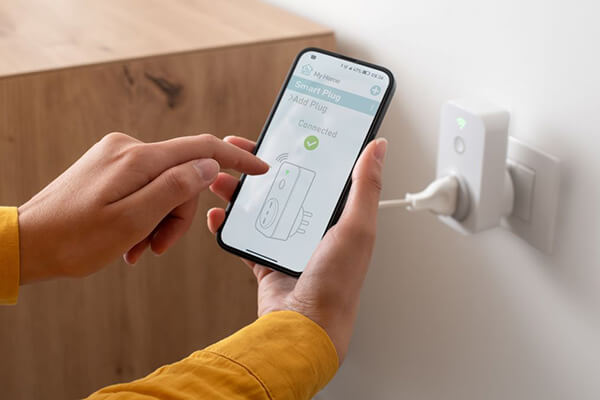
Often, smart plugs can also track electricity usage. You can create automated schedules that turn electrical appliances off when not they’re never used. Furthermore, these devices can be used to monitor power drawn from individual appliances, thereby providing detailed insight into energy utilization.
You can even monitor and control your child’s energy expenditure. For example, if your teenager’s television or computer is consuming too much energy at night, you can program to turn the power off at a specific hour, or you can just manually turn the power off from the comfort of your own bed!
5. Water Leak and Freeze Detectors
Again, not directly saving electricity, but bear with us!
Smart water leak and freeze detectors are a significant advancement in the field of home automation, allowing for continuous monitoring of subtle changes in temperature and humidity levels.
When water leaks or pipes freeze, the result can often flood a home which can be damaging, costly and wastes hundreds of litres of water. Smart detectors help by catching leaks before they happen or when they have just begun. Preventing damage and saving you time, stress and money.
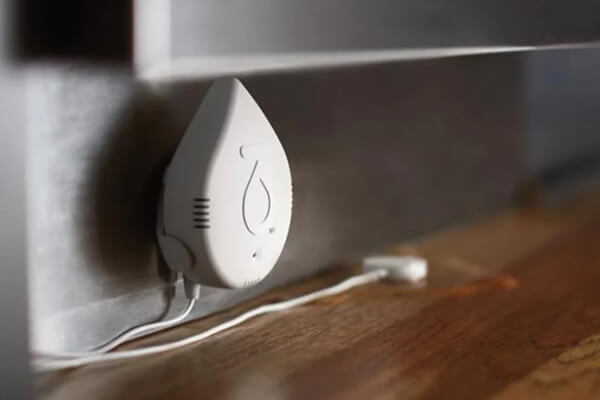
You can place smart water leak detectors under your sinks, near your washing machine, near your hot water service or anywhere where there’s a risk of a water leak. You will receive an alert when a leak is detected, or there is a high chance of a water leak.
6. Smart Light Bulbs
Smart light bulbs are connected to your smart home system, allowing you to automate in-house lighting or control the lighting from your smart device. You can control things such as colour, brightness and timing. Many smart light bulbs use LED lighting which in itself saves electricity!
For example, at night, you can set a gradual decline in brightness throughout the evening, indicating to your brain that it’s almost time for bed.
Many smart light bulbs can be configured to respond to voice commands – you don’t have to get up to turn the lights on or off! Sharing a similar system to smart plugs, smart bulbs can also be controlled remotely via an app.

So, whether you want to save energy, turn off a light that was left on, or even if you want to turn them on at night to indicate that someone is home while you’re away – smart bulbs enable you to do this wherever you are! They are the way of the future.
7. Smart Appliances
Smart Appliances can save you electricity through a variety of approaches.

A “smart” appliance refers to the ability of certain appliances to connect to the internet and learn how to self-regulate their own energy consumption. They can also intelligently adjust their power settings based on the environment and user preferences.
For example:
- Your dryer can even let you know when you’ll be charged the least amount for drying your clothes.
- Your dishwasher can run when there’s a lower electricity tariff during the night.
- Your washing machine can email you if a fault is detected.
The possibilities are endless, and as smart appliances get smarter, the ways they can save you on electricity consumption and other costs will only get better!
There’s also many other practical tips on how you can save electricity with your appliances, such as how to save electricity with your fridge.
Are Your Ready to Get Smart?
It all may seem a little too much to take in – like whatever happened to just having a simple washing machine, fridge and TV?
That’s ok – we felt the same way too, but now that we’ve learnt how a lot of these smart home systems work, we can’t go back! Just like it’s hard to imagine a world without mobile phones.
Smart homes are forever becoming the way of the future for Australian homes. Even commercial properties are being designed and built with similar systems.
By adding in a touch of WiFi, a sprinkle of A.I and a handful of sensors, your house can drastically save on bills and resources. Smart homes can even give your family a better night’s sleep with added security benefits.
If you live in Western Australia and you’re looking to future-proof your house or learn more about smart homes, call us! The team at Sarros Electrical are here to help you understand what can be done to step into the future today.

